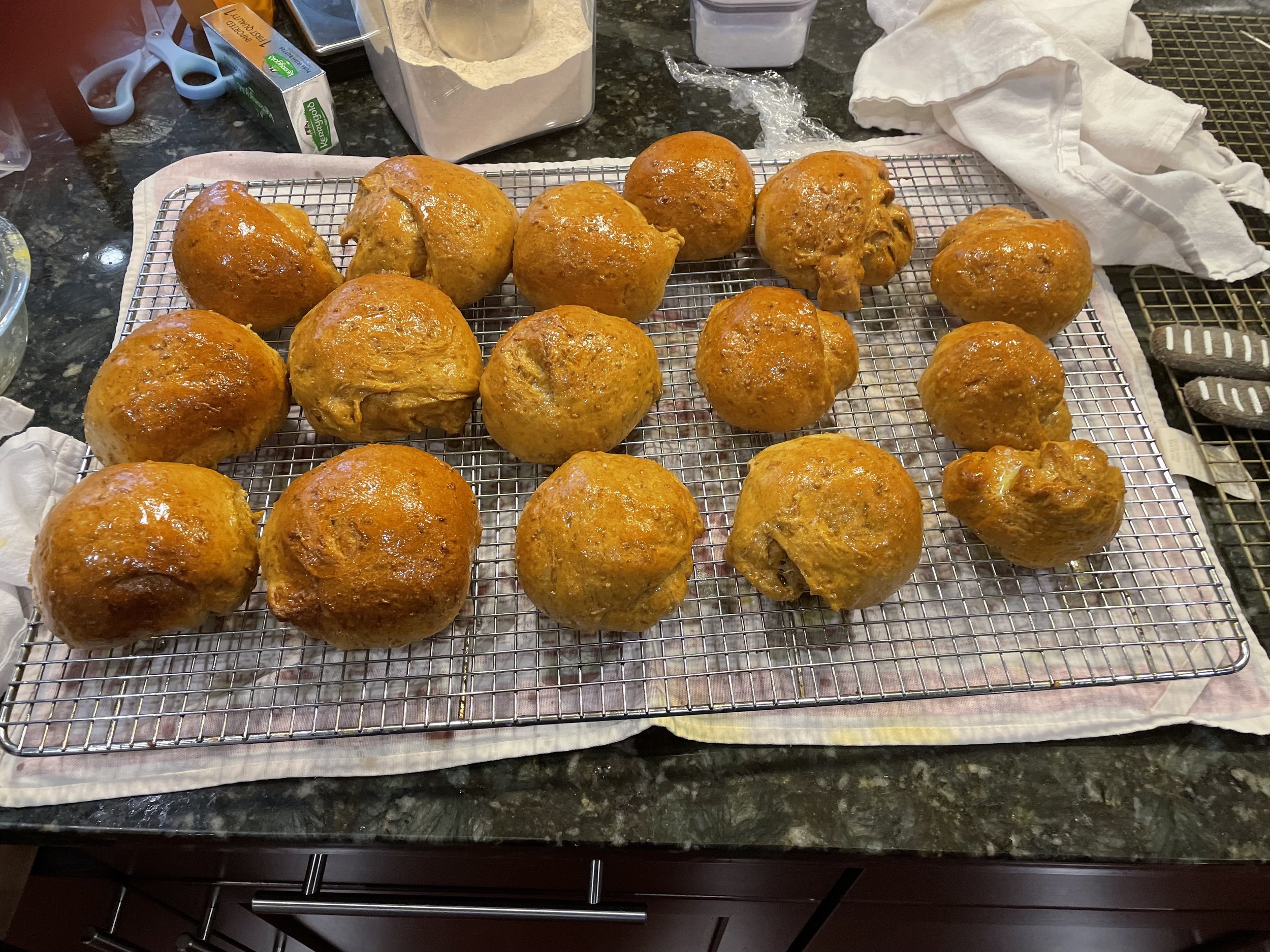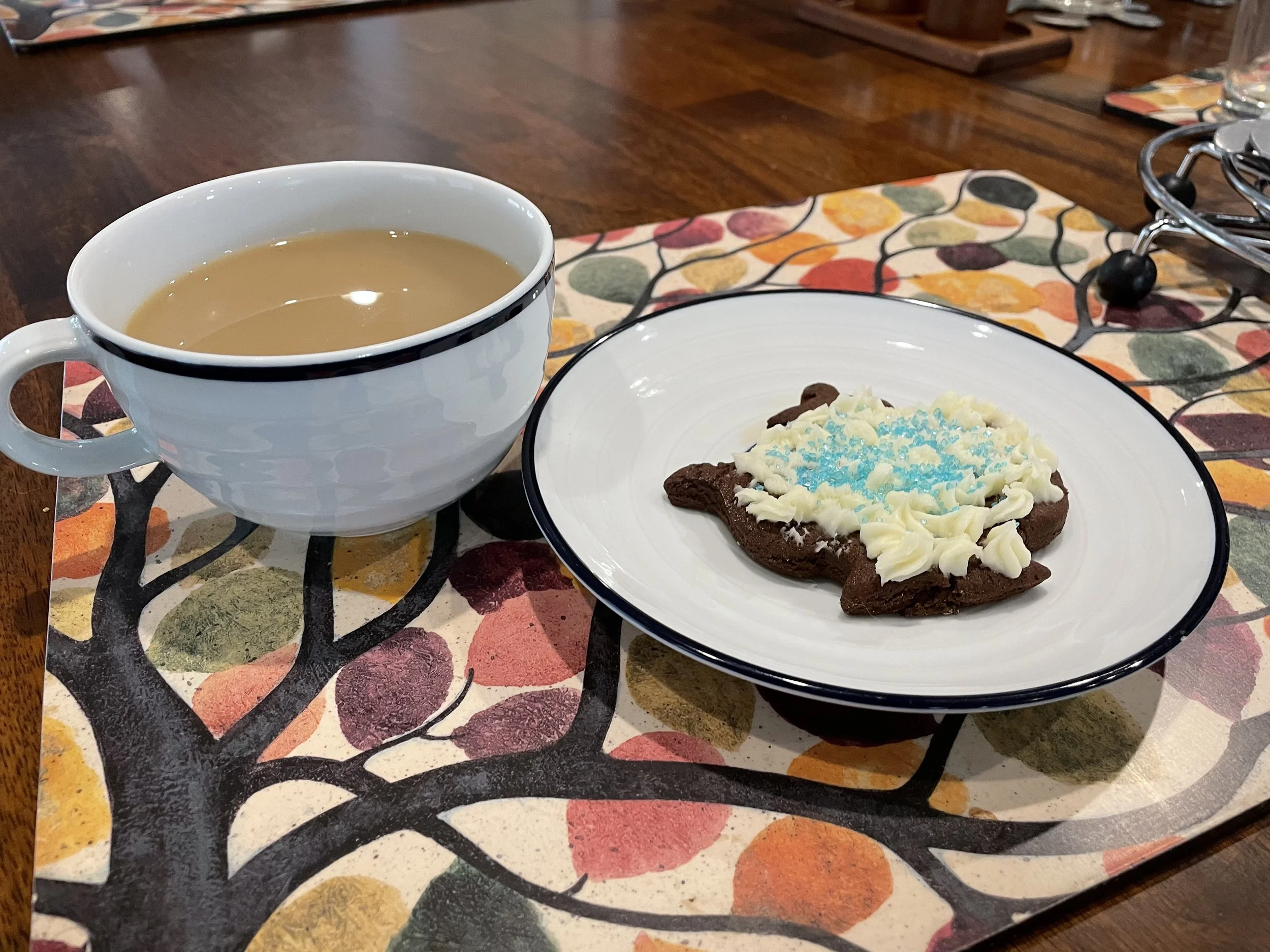Cracked Wheat Rolls
Nuts and Bolts:
Cracked Wheat Rolls is a recipe that has been our family’s Thanksgiving stable for years. It is an old recipe from my husband's family, but I have updated it. Every Thanksgiving, I make two batches, so we have extra rolls for hamburger buns and sandwiches.
My Thoughts on Cracked wheat rolls:
These rolls tend to be hamburger-sized buns once baked. So, if you want small dinner rolls, form them smaller than a golf ball size.
Any molasses works in this recipe, but I tend to have bootstrap molasses in my pantry, so that is what I use.
Cracked wheat can be hard to find in the grocery store, so I buy it in bulk and store it in the freezer.
You do need a stand mixer for this recipe because the dough is difficult to mix and knead by hand.
These rolls freeze well after they are baked.
Day one:
The night before baking, place a cup of cracked wheat and a cup of cold water in a bowl and let it soak overnight.
Day two:
For this recipe, you will need the soaked cracked wheat, 1/2 cup of warm water, 3 tablespoons of molasses, 2 tablespoons of yeast, 2 cups of flour whole-grain wheat, sifted, 5 cups of all-purpose flour sifted, 2 1/2 teaspoons of salt, 1 cup of milk, ¼ cup of butter, 1/4 cup of honey, 1 large egg beaten, some softened butter to grease the pan, and 1/2 cup or more melted butter.
I start by sifting the whole wheat flour into a bowl. Next, in a separate bowl, I sift the all-purpose flour. Then in a small pitcher, mix ½ cup of warm water and 1 tablespoon of molasses together. Then add 2 tablespoons of yeast to the pitcher and lightly mix. Set it aside and wait for it to start foaming. After that, place the 1 cup of milk and the ¼ of a cup of butter into a microwave-safe pitcher. Then microwave the milk and butter for a minute. It is fine if not all of the butter has melted, as long as it's softened. It can be broken up by mixing it with a fork. Then, beat the egg in a small pitcher or bowl.
On the left is the pitcher of melted butter and milk. On the right is the foamy yeast mixture ready for use.
Important tip: Temperature of ingredients is essential when baking bread. If the ingredients are too hot, it will kill the yeast. If it is too cool, it will take longer to proof the yeast, and bread will take longer to rise. So in this recipe, we want the milk to be warm but not hot. Therefore, a minute or less in the microwave will warm the milk.
Next, in the bowl of a stand mixer fitted with a paddle attachment, add the sifted whole wheat flour with the yeast mixture, 2 tablespoons of molasse, the milk mixture, and the beaten egg. Then mix at high speed for 2 minutes. After that, lower the speed of the mixer and add all of the cracked wheat. Then slowly add about half of the all-purpose flour and then add the salt. After that, add the rest of the flour, and by now, it should start pulling away from the sides. Then switch to the dough hook and knead at low speed for about 2 minutes or until it starts to ball up.
Important tip: Full disclosure, I have broken many stand mixers by running them too fast with the dough hook. It is important to run the machine at a low speed. It may mean that it will take longer to knead your dough, but it is much better than breaking the machine.
Mixing the dough: Left is all the wet ingredients with the whole wheat, middle is the all-purpose flour being incorporated, and right is the dough being kneaded.
Once it is in a ball shape, I like to give it a quick knead in the bowl and form it into a tighter ball. Then I transfer it to a bowl that is greased with butter, cover the bowl with plastic wrap and let it rise in a warm space for 90 minutes.,
This dough, after the first rise, should be soft and airy. It will double in bulk. Next, deflate the dough and place it on a floured surface to shape the rolls.
Important tip: I tend to make my rolls the size of hamburger buns. You do not have to do that. If you use a golf ball-sized dough, you will have a smaller roll.
The dough on the left is ready for the first proof, and on the right is the fully risen dough.
Next, to shape the rolls, I form the dough in a log shape and cut pieces of dough off using a dough knife. Then I form it into a ball by pinching the dough's end to form a balloon-like shape. After that, I place it on a rimmed cookie sheet lined with parchment paper. Continue until all the dough is shaped into rolls and is on cookie sheets. You may need two or more cookie sheets for this recipe. After that, cover the tray with a towel and let the rolls rise for an hour. While they are rising, Preheat an oven to 400°F. Next, melt a stick of butter to coat the finished rolls. When the rolls have been proofed, place them in the preheated 400°F oven and bake for 15-20 minutes. The baking time will depend on the size of the rolls.
Shaping the dough into the rolls.
Mess Factor: One of the messiest parts of the recipe is bruising the melted butter onto the rolls. It can lead to the counter being covered with butter. I like to put a tea towel under the cooling rack to catch the butter. When you are cleaning up, you can just put the towel in your washing machine and wipe down your counter—much less mess to deal with in your kitchen.
Once baked, remove them from the oven and immediately place them on cooling racks. Then brush all over with melted butter and cool. Enjoy!
Final thoughts on racked wheat rolls:
This is a family tradition for Thanksgiving, but I make two batches every year to have them around since they freeze well. It is not a complicated recipe, but it yields a lot of dough, which can be hard on your mixer. But it is so worth giving it a go in your mess.
Rolls cooling after being brushed with melted butter.








